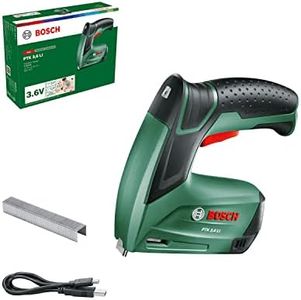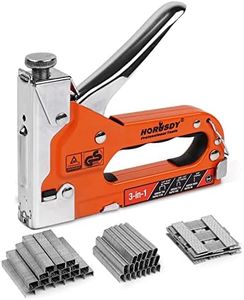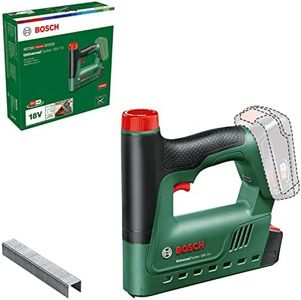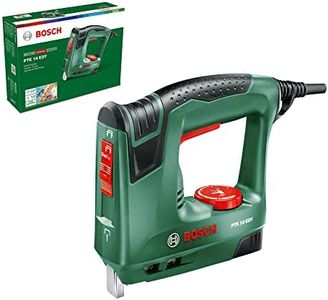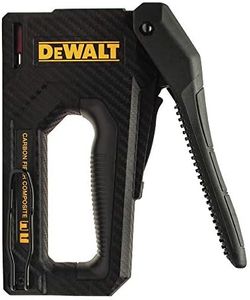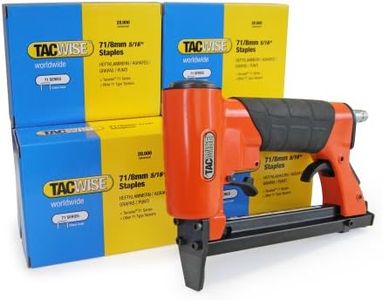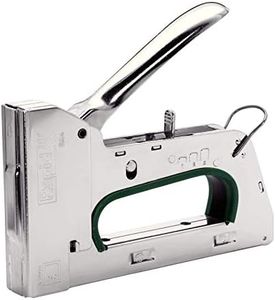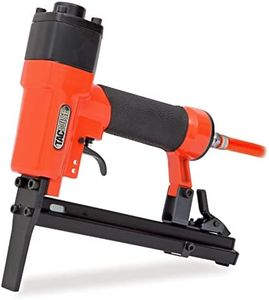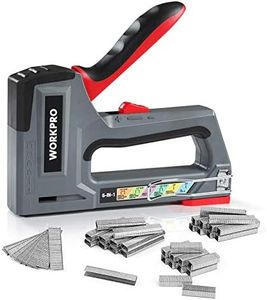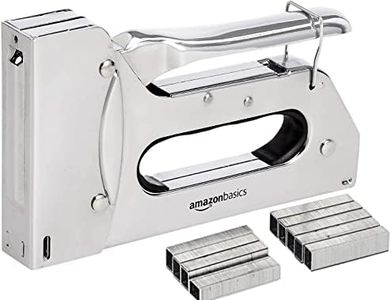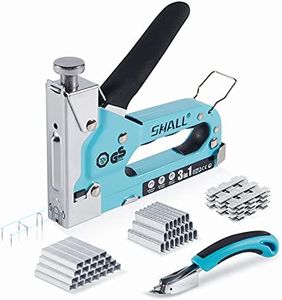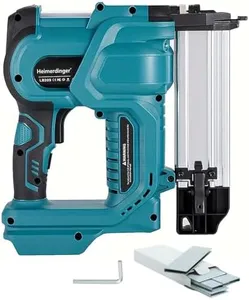We Use CookiesWe use cookies to enhance the security, performance,
functionality and for analytical and promotional activities. By continuing to browse this site you
are agreeing to our privacy policy
10 Best Staple Guns
From leading brands and best sellers available on the web.By clicking on a link to a third party's website, log data is shared with that third party.
Buying Guide for the Best Staple Guns
Choosing the right staple gun can make your crafts, repairs, or construction projects much easier and more efficient. Whether you need one for occasional DIY, home repairs, upholstery, or heavier-duty work, it helps to understand what drives the performance and suitability of a staple gun. Consider how often you’ll use it, the materials you’ll need to staple, and how comfortable you are with handling tools as you search for the best fit.Power SourceStaple guns come in three main power types: manual, electric, and pneumatic (air-powered). Manual staple guns require hand strength and are good for light tasks and portability, but may tire your hand during long use. Electric staple guns use batteries or plug into power, making them easier to use repeatedly, though they may be slightly heavier. Pneumatic staple guns use an air compressor, providing strong force for frequent or tough work but require extra equipment and setup. If you expect to use the staple gun for occasional home jobs, a manual might suffice. For frequent use or tougher materials like hardwood, electric or pneumatic guns will be less tiring and more effective.
Staple Size CompatibilityStaple guns are often designed for certain staple sizes or ranges, typically defined by staple width and leg (prong) length. Smaller staples are perfect for light fabrics, paper, and craft projects, while longer, thicker staples are better for heavy fabrics, wood, or insulation. Check what sizes the staple gun accepts—models that work with multiple sizes offer versatility, which is ideal if you expect to tackle various tasks. Consider what materials you usually staple and make sure your choice accommodates the right staple lengths and widths.
Jam Clearing MechanismStaple jam can be a common frustration, especially if you use lower-quality staples or staple into tough materials. Some staple guns offer easy jam-clearing mechanisms so you can get back to work quickly without disassembling the tool. If reliability and ease of troubleshooting are important to you, look for a model that clearly describes an easy jam-clearing process. This feature is especially useful for beginners or those who prioritize hassle-free operation.
Ergonomics and WeightHow a staple gun feels in your hand makes a big difference, especially during extended use. Lightweight models are less tiring and easier to control, but sometimes at the expense of heavy-duty power. Comfortable handles, often with rubber grips or ergonomic designs, can reduce strain and slipping. If you have small hands, limited strength, or anticipate using the staple gun for long periods, pay special attention to ergonomics and choose a model that feels comfortable for your grip size and strength.
Magazine Capacity and Loading MethodThe magazine holds the staples, and its capacity determines how often you’ll need to reload. Higher capacity means less frequent loading, which is convenient for big projects. Loading methods vary; some staple guns have a bottom-load, top-load, or rear-load system. Choose one that seems simplest for you to manage, especially if you’re new to staple guns or have dexterity concerns. If your projects are quick and small, smaller capacity may be fine, while lengthy or frequent projects benefit from higher capacity.
Safety FeaturesSince staple guns can be powerful tools, safety features like trigger locks or nose guards are valuable to prevent accidental firing, especially in homes with kids or in busy workspaces. These features can provide peace of mind and reduce the risk of accidents. If safety is a priority, make sure the staple gun has a reliable and simple-to-use safety mechanism.

